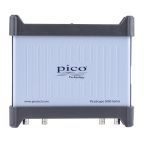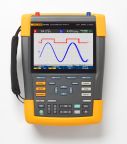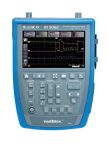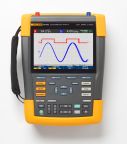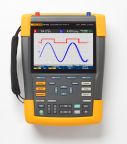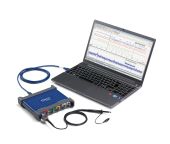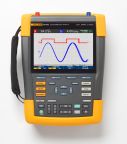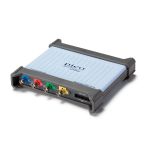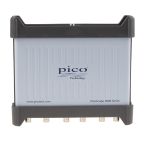60MHz oscilloscope
A 60 MHz oscilloscope is an electronic test instrument designed to measure, visualise, and analyse electrical signals with a maximum frequency of up to 60 megahertz (MHz). The "60 MHz" specification refers to the oscilloscope's bandwidth, indicating the range of frequencies it can accurately capture and display.
The oscilloscope typically has a screen that displays the waveform of the input signal, showing how the voltage changes over time. This helps in visualising the signal's amplitude, frequency, and any distortions. The sampling rate is how often the oscilloscope samples the input signal to create a digital representation of it. For accurate measurement, the oscilloscope's sampling rate should ideally be at least 5 to 10 times the bandwidth. For a 60 MHz oscilloscope, this might be around 300 to 600 Msps.
Why Would You Use a 60 MHz Oscilloscope?
- Signal Analysis - to troubleshoot and design circuits, measure waveforms, and check signal integrity.
- Educational and Professional Use - for teaching electronics and signal analysis. In professional settings, it’s used for tasks such as debugging microcontroller circuits, analysing sensor outputs, and working with communication signals that are within its bandwidth range.
- Troubleshooting - engineers and technicians use oscilloscopes to diagnose problems in circuits, such as identifying faulty components, observing signal distortion, or checking timing relationships between different parts of a circuit.
What Does It Do?
Captures and Displays Signals - oscilloscopes take an input signal and displays its waveform on the screen. This allows users to observe the shape, amplitude, frequency, and phase of the signal.
Measurement and Analysis - measures various parameters of the signal, such as peak voltage, frequency, duty cycle, rise time, and more
Triggering - allows users to stabilise repetitive waveforms and capture specific events in the signal, such as a glitch or a pulse.
Popular Searches
Related links
- Rohde & Schwarz RTH1002 Scope Rider Series 2 Analogue Channels
- Oscilloscopes & Accessories
- Fluke 125B ScopeMeter 120B Series 2 Analogue Channels
- Rohde & Schwarz RTH1002 Scope Rider Series 2 Analogue Channels
- Rohde & Schwarz RTH1004 Scope Rider Series 4 Analogue Channels
- Rohde & Schwarz RTH1K-COM4 Scope Rider Series 4 Analogue Channels
- Fluke 125B ScopeMeter 120B Series 2 Analogue Channels - RS Calibrated
- Rohde & Schwarz RTH1004 Scope Rider Series 4 Analogue Channels - UKAS Calibrated

